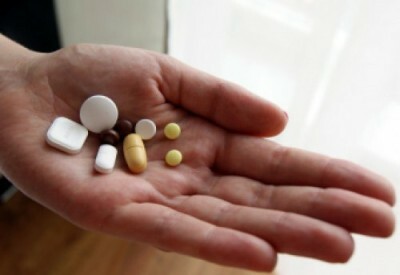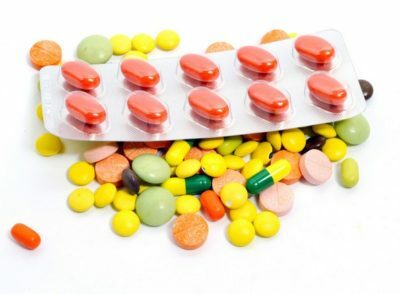1 Causes of development of
In medicine, dysbacteriosis is not considered a full-fledged disease. Rather, it is a condition in which symptoms of various diseases manifest themselves. The presence of the prefix "dis" already indicates some violation.

Recommended to read
- Preparations for intestinal dysbiosis
- Causes and treatment of chronic gastritis in adults
- Symptoms and treatment of gastric cardia deficiency
- Effective agent for gastritis and stomach ulcer
Dysbacteriosis occurs when a balance of useful and harmful microflora is disturbed under the influence of various factorsin the lumen of the intestine or its mucous membrane. When there is a disturbance in the balance between microorganisms, a person has a question about how to treat a dysbacteriosis developing in the body.
Do you have gastritis?
GALINA SAVINA: "How easy is it to cure gastritis at home for 1 month. A proven method - write down a recipe. ..!"Read more & gt; & gt;
The main place of existence of microorganisms is the intestine. There live about 500 thousand different bacteria that normally perform certain functions, in particular, they synthesize folic acid, B vitamins, and also H and K. When the useful microflora in the large intestine decreases, its ability to absorb nutrients and food processing deteriorates.
The main danger in this case is associated with the risk of developing a secondary immune deficiency, which will be difficult to recover. Failure can lead to the acceleration of the development of "harmful" microflora - pathogens, fungi, pathogenic microorganisms. Often the work of the lymphatic system is disrupted and the excretion of toxins from the body is disturbed.
The main causes of dysbacteriosis in the intestine in adults may be as follows:
- Wrong mode of antibiotic use. Excess amount of medicine can kill not only pathogenic microorganisms( which is why their action is directed), but also "useful" bacteria.
- Diseases of the gastrointestinal tract.
- Unbalanced, improper diet.
- Food poisoning.
- The appearance in the intestine of parasites or pests. In the process of their life, they secrete substances that kill "useful" bacteria.
- Too acidic or alkaline environment in which bacteria live. Conditions can affect the metabolism and cellular membranes of microorganisms. Changes in the environment can occur due to various diseases: bowel disease, gastritis, ulcer, pancreatitis, etc.
- Endocrine system disorders.
- Lack of substances that could serve as a substrate for the development of beneficial bacteria. Can be observed during hard diets. Lack of fiber and dairy products.
- If the intestinal muscles can not promote the food mass. The reason - deterioration of muscle tone, vegetovascular dystonia, stress - physical or psychological.
-
 IMPORTANT TO KNOW! Gastritis? Ulcer? To have a stomach ulcer not turned into cancer, drink a glass. ..Read the article & gt; & gt;
IMPORTANT TO KNOW! Gastritis? Ulcer? To have a stomach ulcer not turned into cancer, drink a glass. ..Read the article & gt; & gt;
In addition, the disorder may be caused by a lack of digestive enzymes. This can cause fermentation of undigested residues, which become a substrate for pathogens.
2 Stages of the disease
At the initial stages of signs of dysbacteriosis in adults is not observed - that is, the process is asymptomatic. Therefore, it is often impossible to establish the onset of the development of a disease. The patient himself can not feel anything, and the appearance of mild ailment can not be associated with the development of dysbiosis.
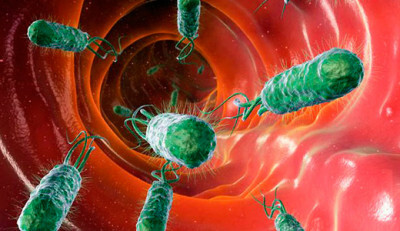
We list how the dysbacteriosis manifests itself at different stages, depending on changes in the intestinal microflora.
The initial stage of the dysbacteriosis has no bright symptoms, since the microflora is not damaged so much. The only sign is rumbling in the abdomen. Usually the onset of this stage is caused by the intake of antibiotics. Another reason may be a change of residence and, as a consequence, a change in the products and composition of water. If at this stage the negative impact stops, then the microflora will recover and further progression of the disease will not occur.
-
 Gastroenterologist VAZHENOV: "I beg you, if you began to worry about abdominal pain, heartburn, nausea, do not in any way do gases. .."Read more & gt; & gt;
Gastroenterologist VAZHENOV: "I beg you, if you began to worry about abdominal pain, heartburn, nausea, do not in any way do gases. .."Read more & gt; & gt;
Signs of intestinal dysbacteriosis in the second stage of the disease is not difficult to notice. During this period, bloating, decreased appetite, nausea. The process can be accompanied by constipation or, conversely, diarrhea.
Disease in the third stage already requires serious treatment. In addition to the symptoms common to the second stage of the disease, the symptoms of intestinal dysbiosis have some other manifestations: abdominal pain and worsening digestion of food. Undigested food remains are observed in the patient's stool. Disease-causing bacteria cause inflammation of the intestinal wall, practically "eating" it.
The fourth stage of dysbiosis is already a serious disease. Virtually no microflora remains. Because of the multiplication of pathogenic bacteria, the intestine can not practically absorb nutrients, as a result of which avitaminosis and anemia develop. In addition to general symptoms of intestinal dysbacteriosis, adults experience depression, depression, constant fatigue, and sleep disorders. At a dysbacteriosis of 4 stages intestinal infections which can strongly damage health of the patient, and in some cases and lead to a tragical outcome can develop.
ADVICE FROM THE MAIN GASTROENTEROLOGIST
Korotov SV: "I can recommend only one remedy for the rapid treatment of Ulcer and Gastritis, which is now recommended by the Ministry of Health. .." Read the reviews & gt; & gt;
3 Clinical picture in toddlers
Dysbacteriosis can develop in young children in different cases:
- if the child is too late to attach to the breast, and the beneficial microflora did not have time to form;
- early start of complementary feeding;
- eating disorders( misuse of sweets, improperly selected menus, irregular meals);
- helminthiosis;
- treatment with antibiotics.
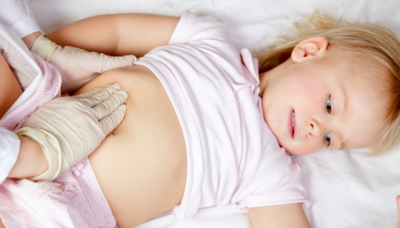
The first stage of the disease in a child, as in adults, has no manifestations. Establish a dysbacteriosis is possible only in the analysis of feces.
The main symptoms of intestinal dysbacteriosis arising in the second stage in a child are constipation or diarrhea. The second can be a sign of an infectious disease, so to clarify the diagnosis you need to see a doctor.
In the next stage - decompensation - the number and variety of pathogens increases. At this stage, the symptoms are not difficult to notice, as the child loses weight sharply, develops diathesis( in children under 12 years old);lethargy and pallor of the skin. At the stage of decompensation, a lack of digestive enzymes develops.
The fourth stage of the intestinal dysbacteriosis has symptoms inherent in a serious ailment in its acute form. Treatment at home can no longer be effective, so it continues in a hospital.
4 Nutrition
Self-treatment of intestinal dysbiosis in adults is possible only in the first stage, when there is no suppression of beneficial microorganisms pathogenic. In this period it is enough to buy drugs, for example, "Linex", and take it according to the instructions. As an additional measure, you need to take time to review your diet and lifestyle.

In other cases it is necessary to follow the basic rule: self-medication is unacceptable! Since any disease, including dysbacteriosis, develops gradually, it is necessary to approach its treatment step-by-step.
A set of measures for the treatment of dysbiosis should include the following steps:
- The purpose of the diet, which the patient must strictly adhere to during the treatment period.
- Regulation of the rhythm of food tube cuts.
- With the help of drugs, restoration of useful intestinal microflora is carried out. It is often prescribed antibiotic therapy, but this measure is not preferable, since it can cause the death of beneficial bacteria.
- Elimination of excess bacteria in the intestine.
In addition, measures are taken to restore the microflora and intestinal functions.
5 Diet
Since the main reason for the development of dysbiosis is malnutrition, you can begin treatment with its normalization.
Patients are given a balanced diet with the optimal amount of all important components: fat( up to 120 g), proteins( not less than 120 g), carbohydrates( up to 450 g).At the same time, the diet should not be irritating and maloslag.
The diet excludes fatty and spicy food, as it can worsen the state of the intestinal walls, and so weakened by the action of bacteria, besides itself is a good medium for their development.

In order to eliminate another symptom - flatulence, doctors recommend avoiding baking, sour fruits and cabbage, as well as any products that can cause fermentation.
Use of meat for dysbacteriosis is advised to limit. You can cook the dishes only for a couple, bake, stew or cook, but in no case do not fry.
Do not drink water or drink immediately after eating. It is recommended to wait at least half an hour, until the food starts to be digested - otherwise the water will dilute the gastric juice, and the process will slow down considerably.
At the time of treatment, a strict taboo is imposed on alcoholic beverages, coffee, ice cream, sweets, milk( whole).It is worth paying attention to the quality of products: do not eat foods containing preservatives, dyes and flavors, flavor enhancers. It is better to give preference to high-quality natural products.
It is recommended to include foods containing lactobacilli or bifidobacteria in the diet. The choice of products is wide: yogurt, bifidum, kefir and others. Use them at least 4 times a week, daily use is only welcome.
The fiber has a beneficial effect on the growth of useful microflora. Therefore, the diet should include as much food as possible: bread or bran, cereals, vegetables and non-acidic fruits.
Using a diet for dysbiosis can reduce symptoms and treatment more effectively.
6 Drugs for the therapy of
To help the body normalize digestion, you can take some medications such as Mezima or Creon.
If dysbacteriosis is at an early stage of development, it is better to buy drugs that kill pathogenic bacteria - bacteriophages, Enterol, etc. At the same time, it is recommended to take sorbents - drugs that can draw in and remove from the body pathogenic bacteria and substances.
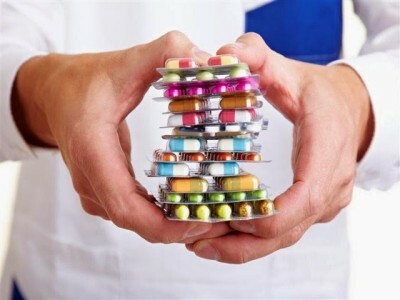
The next stage is the settlement of the "useful" microflora. With this task will help to cope with well-known drugs "Bifiform", "Linex", "Bifidumbacterin."Independently to choose a medicine it is not necessary. Drugs prescribed by the doctor, based on the results of research and analysis, depending on what microorganisms are not enough in the intestine.
To strengthen the microflora and "feed" it allows the popular "Dufalac", "Lactofiltrum" and "Hilak-forte", containing stimulants for the growth of beneficial bacteria. In practice, tablets "Narine", "Yogurt" are used for these purposes. They can reduce the manifestation of certain symptoms: pain and bloating, nausea, stabilize the stool.
In the fight against pathogens bacteria can come in handy folk medicine. The most effective method is the use of garlic. Its components successfully destroy pathogenic microbes that cause fermentation and putrefaction in the intestine.
Another proven tool is propolis. To treat a dysbacteriosis in adults it is possible by means of a tincture of propolis on alcohol.15 drops of this tincture are bred in water, taken three times a day before eating. The course of treatment lasts up to 1.5 months. During this time the pathogenic bacteria gradually die. Similar action is possessed by medicinal plants, such as sage, mother-and-stepmother, root of ara, chamomile, eucalyptus. Very useful are fruit and fruit compotes from cowberry, raspberries, blueberries and strawberries.
As in the case of other diseases, it is not necessary to delay the treatment of dysbiosis, but to consult a doctor as soon as the first signs of the disease appear. Then treatment will not only be effective, but quick and easy.
- 1 Causes of development of
- 2 Stages of disease
- 3 Clinical picture in toddlers
- 4 Nutrition
- 5 Diet
- 6 Drugs for therapy
The imbalance in the body's microflora leads to a condition called dysbacteriosis, the symptoms of which can be extremely unpleasant. When this condition occurs, the question arises as to how to treat dysbacteriosis.

